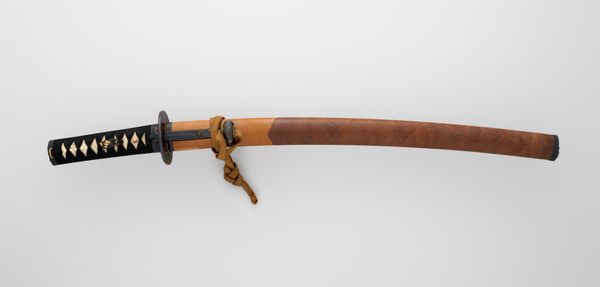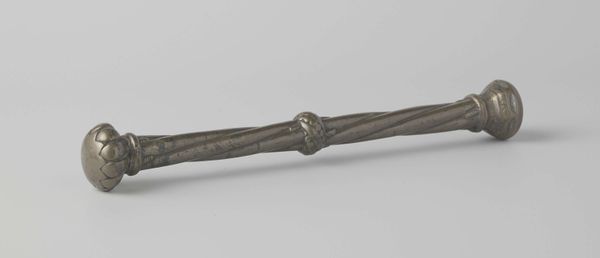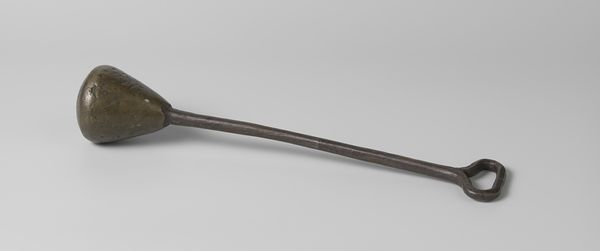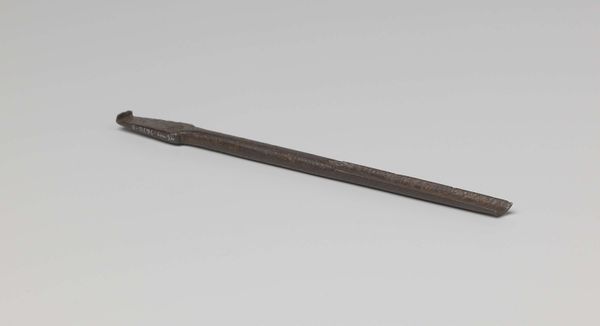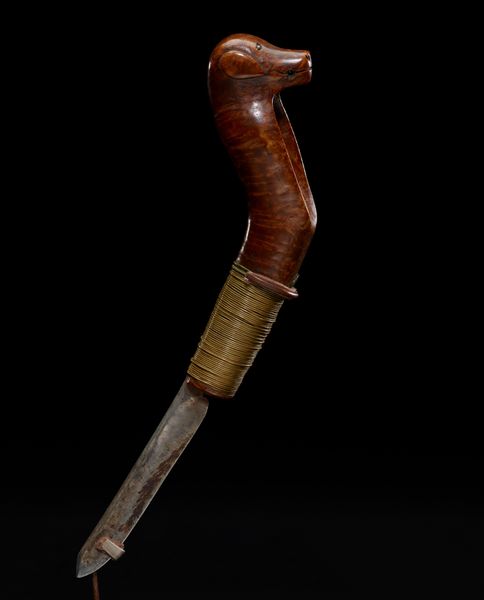
Blades and Mountings for a Pair of Swords (<i>Daishō</i>) 1601 - 1850
0:00
0:00
metal
#
metal
#
asian-art
#
japan
#
form
#
armor
#
sword
Dimensions: L. of sword (<i>katana</i>) 37 7/8 in. (96.2 cm); L. of sword (<i>katana</i>) blade 35 9/16 in. (90.3 cm); L. of cutting edge 27 3/8 in. (69.6 cm); D. of curvatuer 3/4 in. (1.9 cm); L. of sword (<i>katana</i>) scabbard 29 in. (73.7 cm); L. of knife (<i>kozuka</i>) for sword (<i>katana</i>) mounting 8 1/2 in. (21.6 cm); L. of hair dressing tool (<i>kogai</i>) for sword (<i>katana</i>) mounting) 8 1/4 in. (21.0 cm); L. of short sword (<i>wakizashi</i>) 27 1/16 in. (68.7 cm); L. of short sword (<i>wakizashi</i>) blade 23 5/8 in. (60 cm); L. of cutting edge 17 3/4 in.(45.1 cm); D. of curvature 3/8 in. (0.9 cm); L. of knife (<i>kozuka</i>) for short sword (<i>wakizashi</i>) mounting 8 1/2 in. (21.6 cm); L. of hair dressing tool (<i>kogai</i>) for short sword (<i>wakizashi</i>) mounting 8 1/4 in. (21.0 cm)
Copyright: Public Domain
Curator: This object, circa 1601 to 1850, showcases blades and mountings for a pair of swords known as "Daisho". They're attributed to Yokoyama Kozukedaijo Sukesada. Editor: The craftsmanship is immediately striking. The linear design is broken only by the soft curve of the sheathed blade and the tightly wrapped grip, lending an unusual tension to an object that seems so still. Curator: Indeed. Consider the "Daisho" pair; traditionally, it was worn only by the samurai class in Japan. Symbolically, it represents the samurai's status, honor, and martial prowess. Editor: And formally, we observe a play of contrasting textures – the smooth lacquered sheath against the intricate weave of the hilt, with these contrasting bright and dark components enhancing the visual interest. Curator: The motifs themselves tell a story. The detailed metalwork would feature symbols linked to the owner's clan, personal beliefs, or desired qualities like strength or longevity. They would be worn every day as signifiers of their cultural identity. Editor: Semiotically, the object transcends mere function; its material presence communicates ideas of authority, preparedness, and refined artistic expression. The shape of the weapon also provides cultural information and, without seeing the bare blade, speaks to a martial role through implication. Curator: So true. What is implied or evoked becomes more important than simple form, when you consider the layered histories represented. It becomes an embodiment of cultural memory. Editor: Exactly. In looking at these paired swords, one gets a keen sense of how function, craft, and visual design blend into potent symbolic language. Thank you for sharing your insight. Curator: Thank you! It is this layering of intent, material and implied use that renders this piece so enduringly powerful.
Comments
No comments
Be the first to comment and join the conversation on the ultimate creative platform.
